The Vine Maple Lovers
October 18, 2023
Every summer day they passed
under vining tree arms,
dappled shade overhead,
crunch of gravel underfoot.
The old couple-
he on his way in,
she on her way out-
moved on a busy current,
all summer long
under the green they flowed,
tanned arms shade-patterned
by the many hands
of palmate leaves.
Until that day in October
when low-angled sunlight
lit a ruby leaf tip
and she stopped, reached
the vines of her arms
around him
once more.
The common things:
shade, companionship,
the things we rely on:
resilient trees,
loving relationships,
become jewels
in the right light.
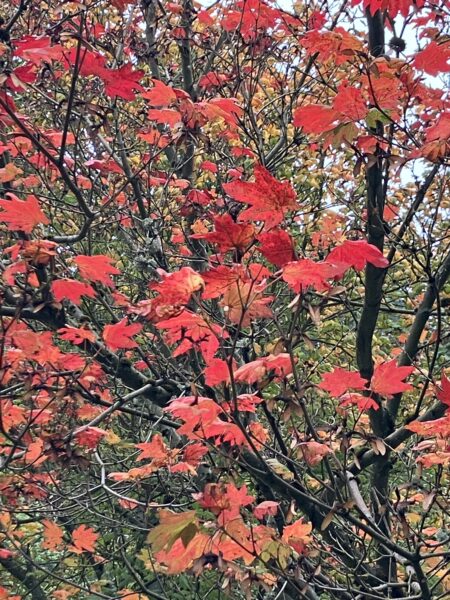
Our native vine maple (Acer circinatum) is so common we take it for granted.
But this month, I keep seeing it anew and it eases something inside me—a grief, a weight of world suffering, of personal anxiety.
The limbs arching overhead along the trail up the flanks of Spencer’s Butte make a sheltered tunnel. Passing through changes me. The air is easier to breathe in.
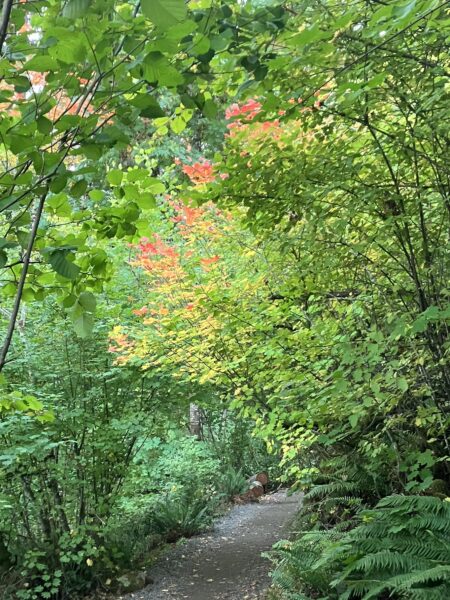
A young new vine maple planted at our Spiral Habitat project rainbow-colors a back corner, providing a goldfinch ladder from the tall spruce down into the new garden.
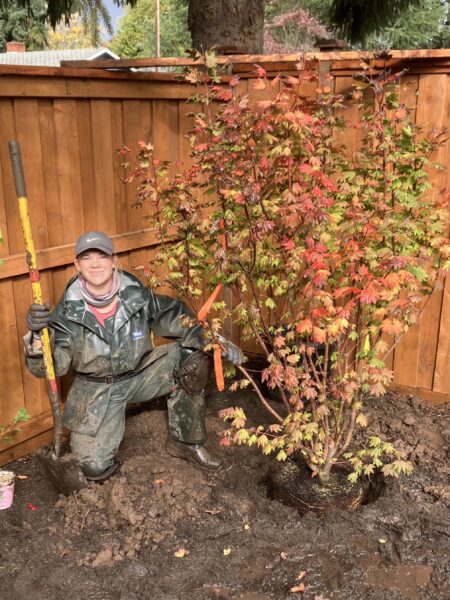
And the nativar (native cultivar) ‘Burgundy Jewel’ stands proudly plum as a focal point out the main windows here.
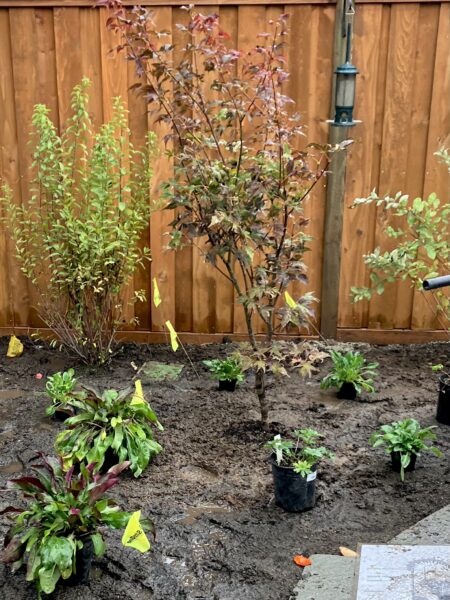
Back home, another nativar, ‘Pacific Fire’ colors warm yellow this fall in front of the marine blue of Aaron’s new art studio. His place of creative renewal received its leafy companion before the interior of the space was finished. It’s important to have tree guardians, and even more important to plant them early.
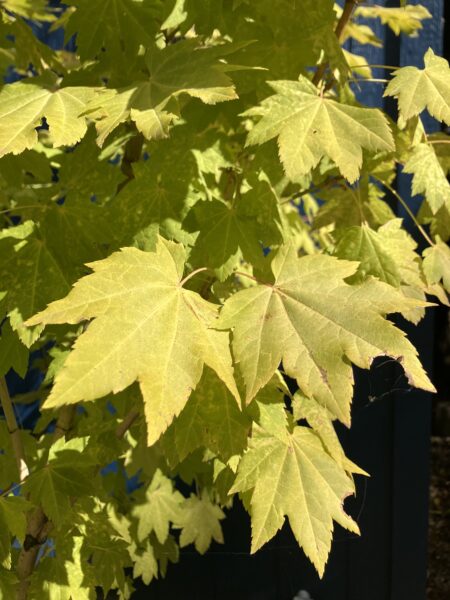
A small tree with many stems gracefully branching and the most reliable fall color of our natives, vine maple belongs in your garden. In early spring, clusters of flowers hang from newly leafed branch tips. Look closely—see the red calyx winging out above white petals and points of pollen. Vine maple provides an early source of food for native bees. It’s helicopter seeds, poetically known as samaras, feed songbirds as well as the creative imaginations of receptive children.
Pacific Northwest gardens have long favored Japanese maples (Acer palmatum) with their thousands of cultivars compelling collectable acquisitions. But, they’re often too precious to place in a layered planting. They steal the show where you need a mixed community of companions. A garden full of specimens feels contrived, commercial, disconnected from nature. Consider our native small maple for naturalizing your scene instead. Plant it in a mixed hedge to green up your fence line or layered under taller trees with goat’s beard (Aruncus dioicus) and wild ginger (Asarum caudatum) at its feet.
And, also, consider vine maple’s named cultivars for that anchor view in your garden where you want something special, but still regional. ‘Burgundy Jewel’ with its rich wash of colored leaves, ‘Sunny Sister’ brightening the shade, or ‘Pacific Fire’ wearing red winter twigs are all worthy specimens that decorate as well as they communicate with the local ecology.
Fall in love again with vine maple this month. Let it light within you a resonance with place and connection to home.
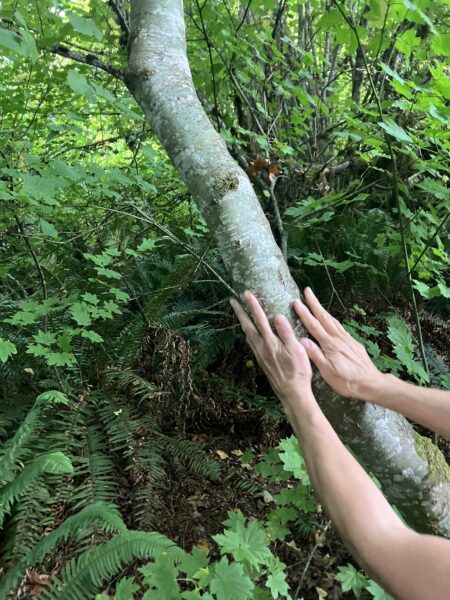

The poem is lovely.
Thank you for mentioning native bees. Spring flowering maples and willows are very important for the pollinators that wake up earliest, like Andrena, Osmia and Bumble bees. Someone in Instagram calls trees sky meadows. A large tree, such as a Big Maple, has more flowers than a typical garden!
We had a vine maple in our yard in Sunnysope above Wenatchee. The previous owner was a forester, but planted woodland plants that were not suited to that far drier and windier environment. The evergreens were riddled with woolly aphid and pine borers. There was a beautiful vine maple until summer heat and wind toasted the edges of its leaves… It was not particularly happy there and we spent a fortune keeping thingsss green by having to do too much watering because of the sandy soil.
Our Douglas maple is also beautiful and might work where a vine maple would suffer. There is a particularly large many-trunked example at Squilchuck State Park. Park in the parking area (bring a Discover Pass) and walk straight up the old road to the loop. It is in front of the restrooms (which are closed.)
Thanks for sharing more info about native bees, Lisa. I love the metaphor of trees as meadows of the sky! And, yes Douglas maple is a perfect swap for vine maple in a drier region. Thank you!